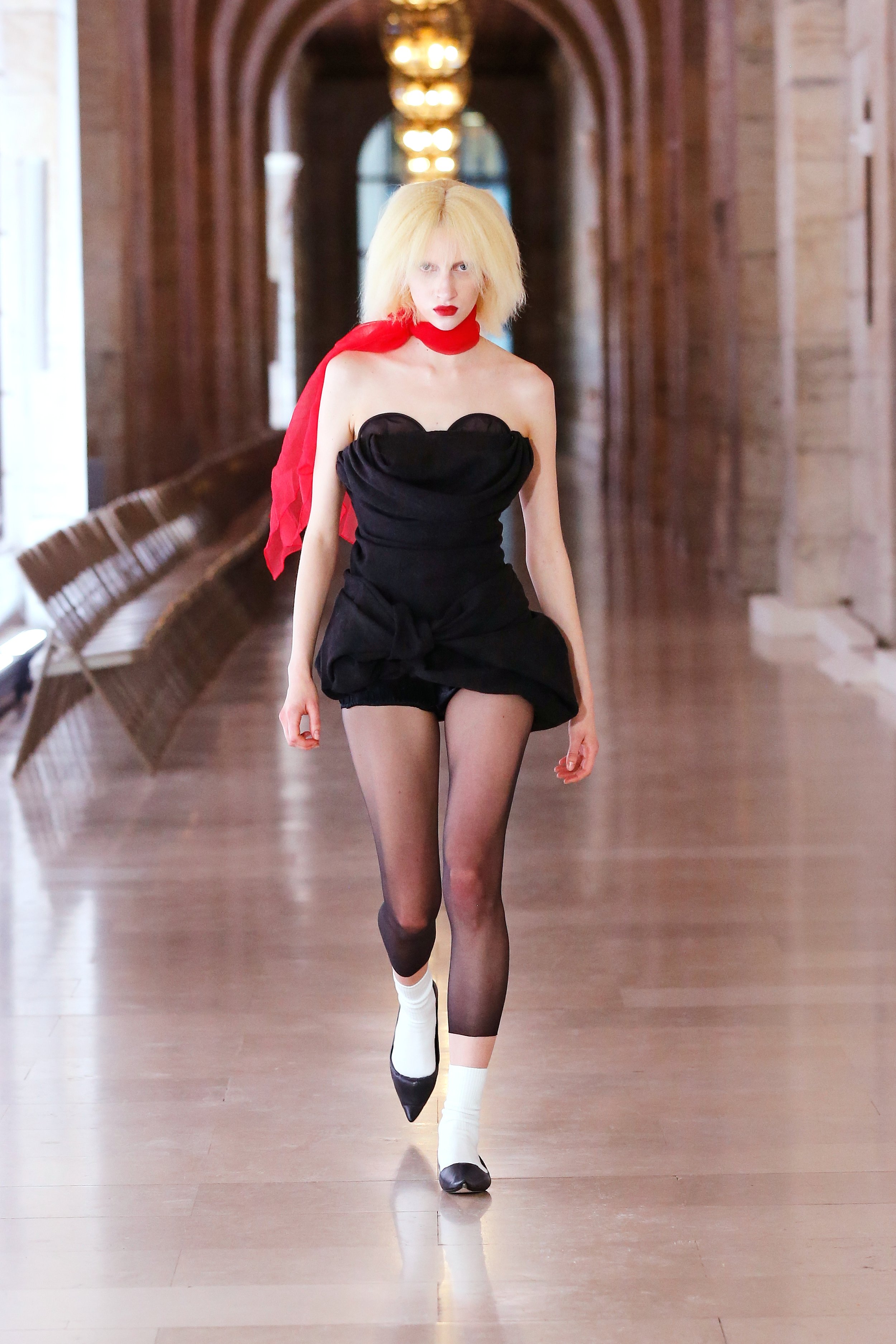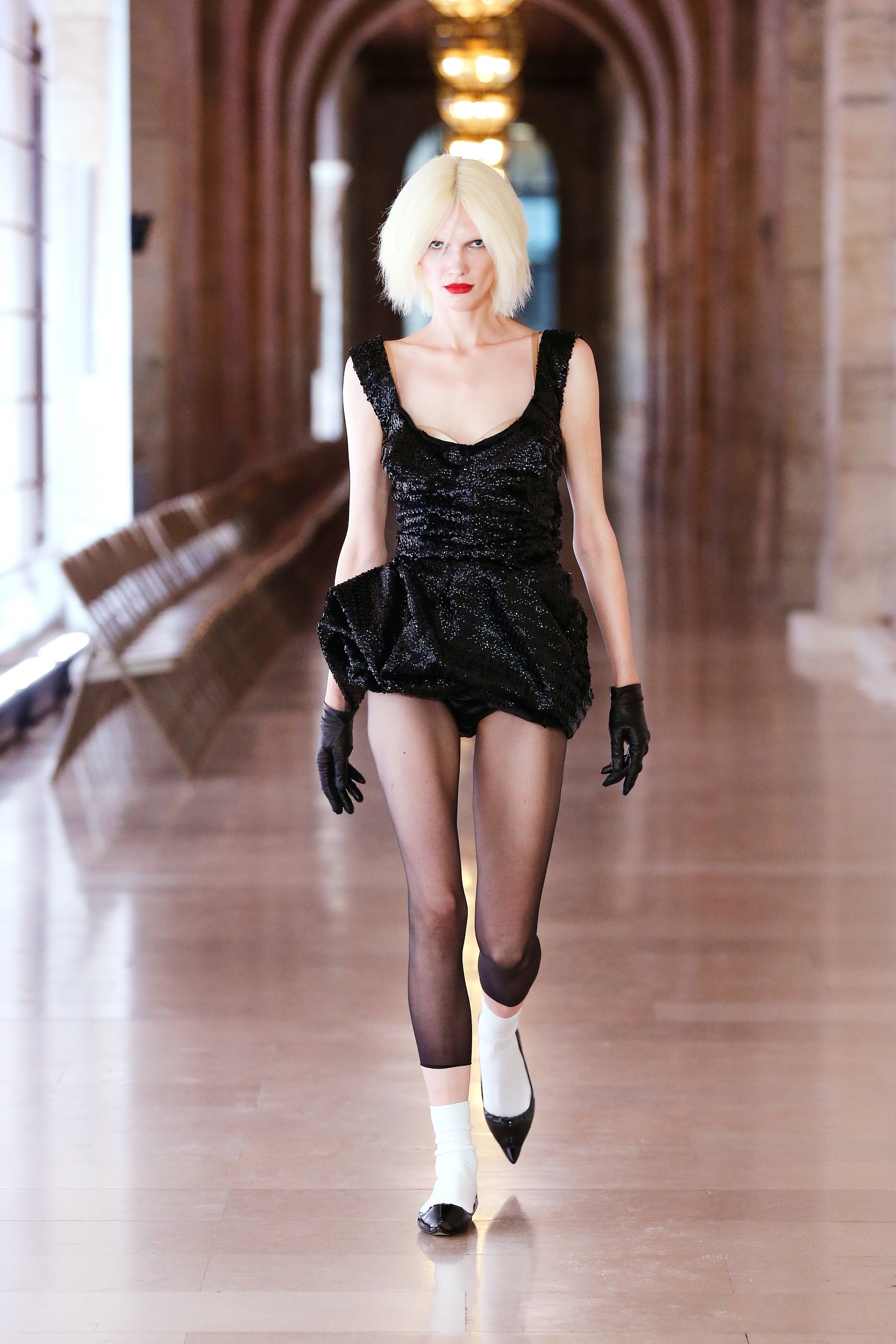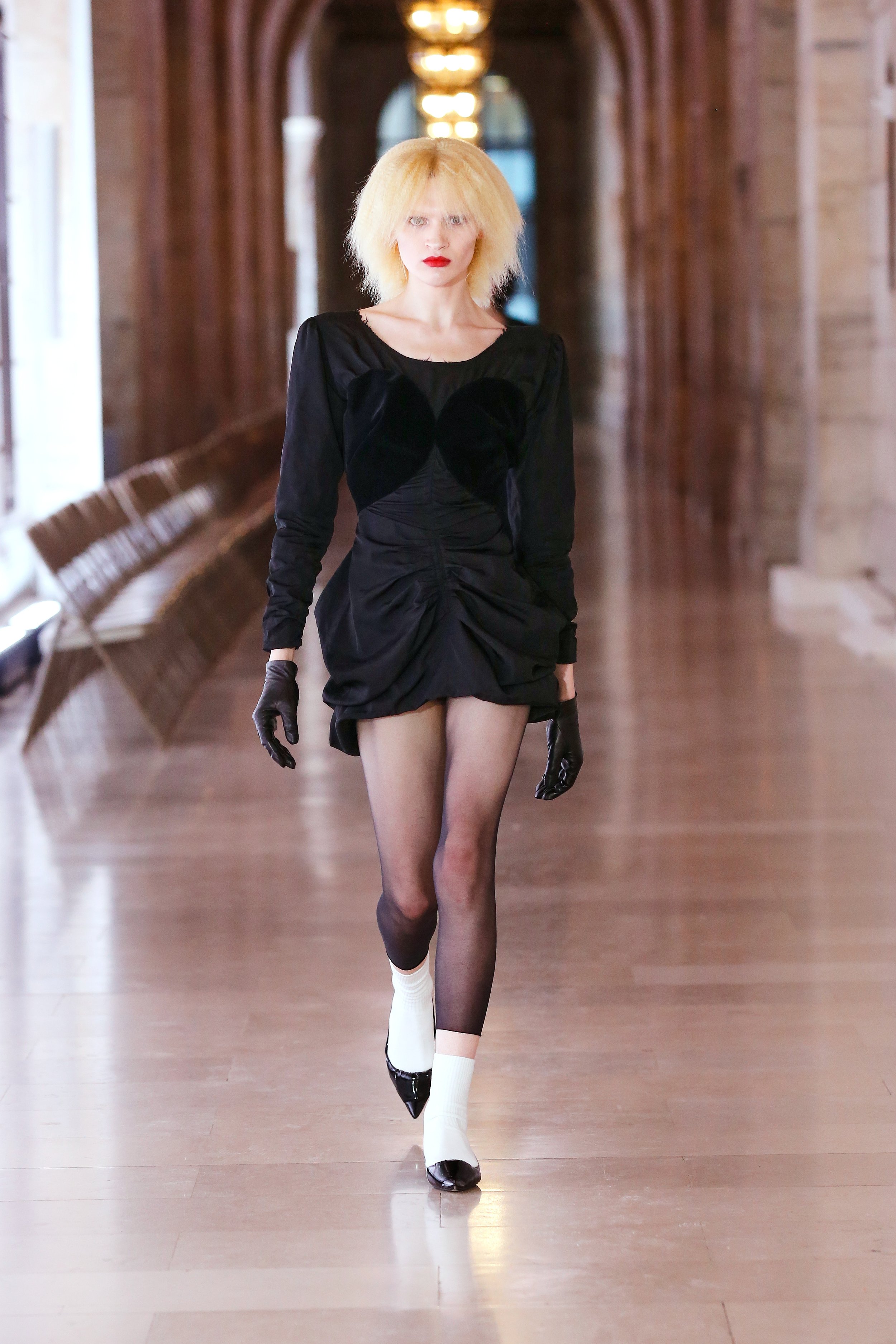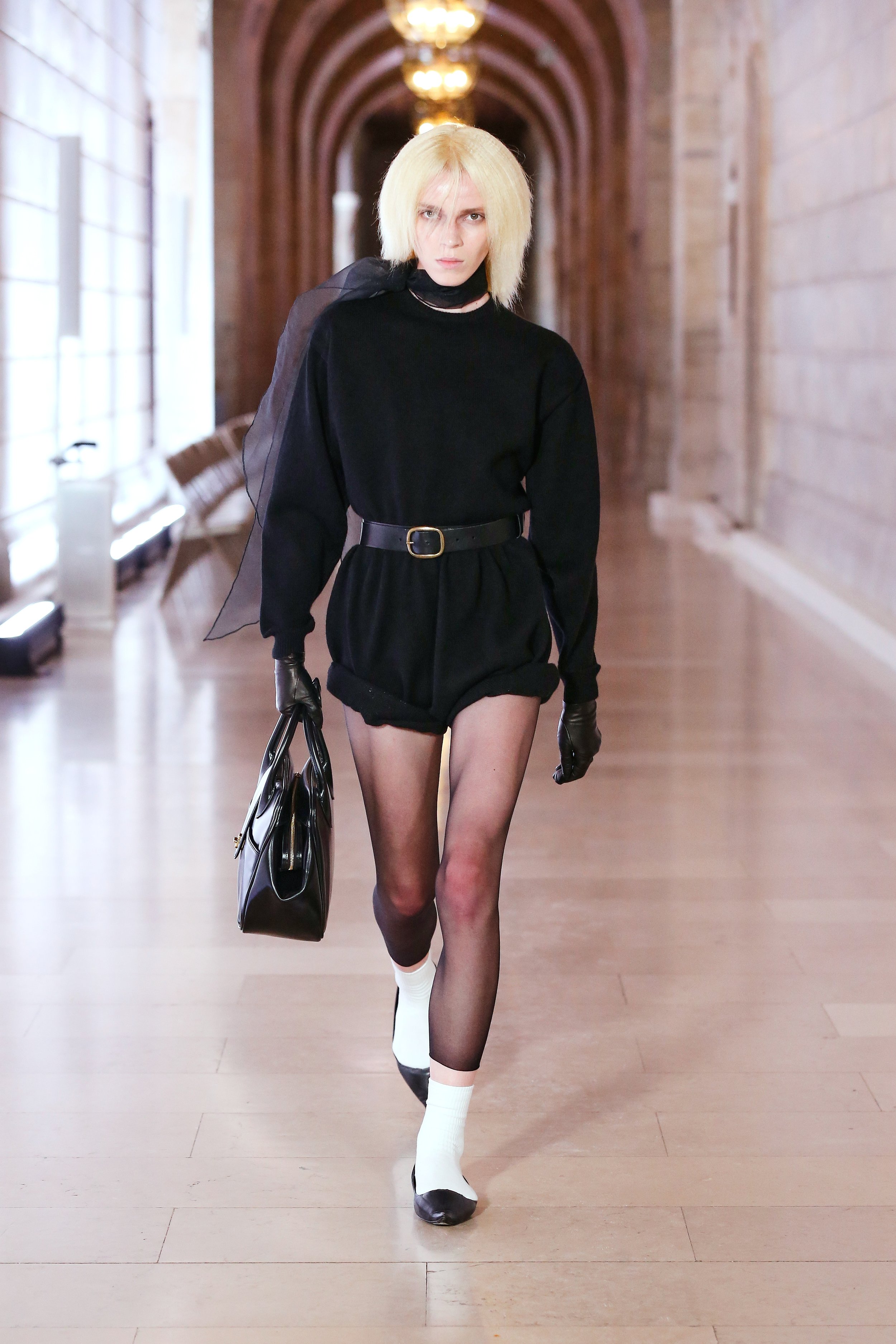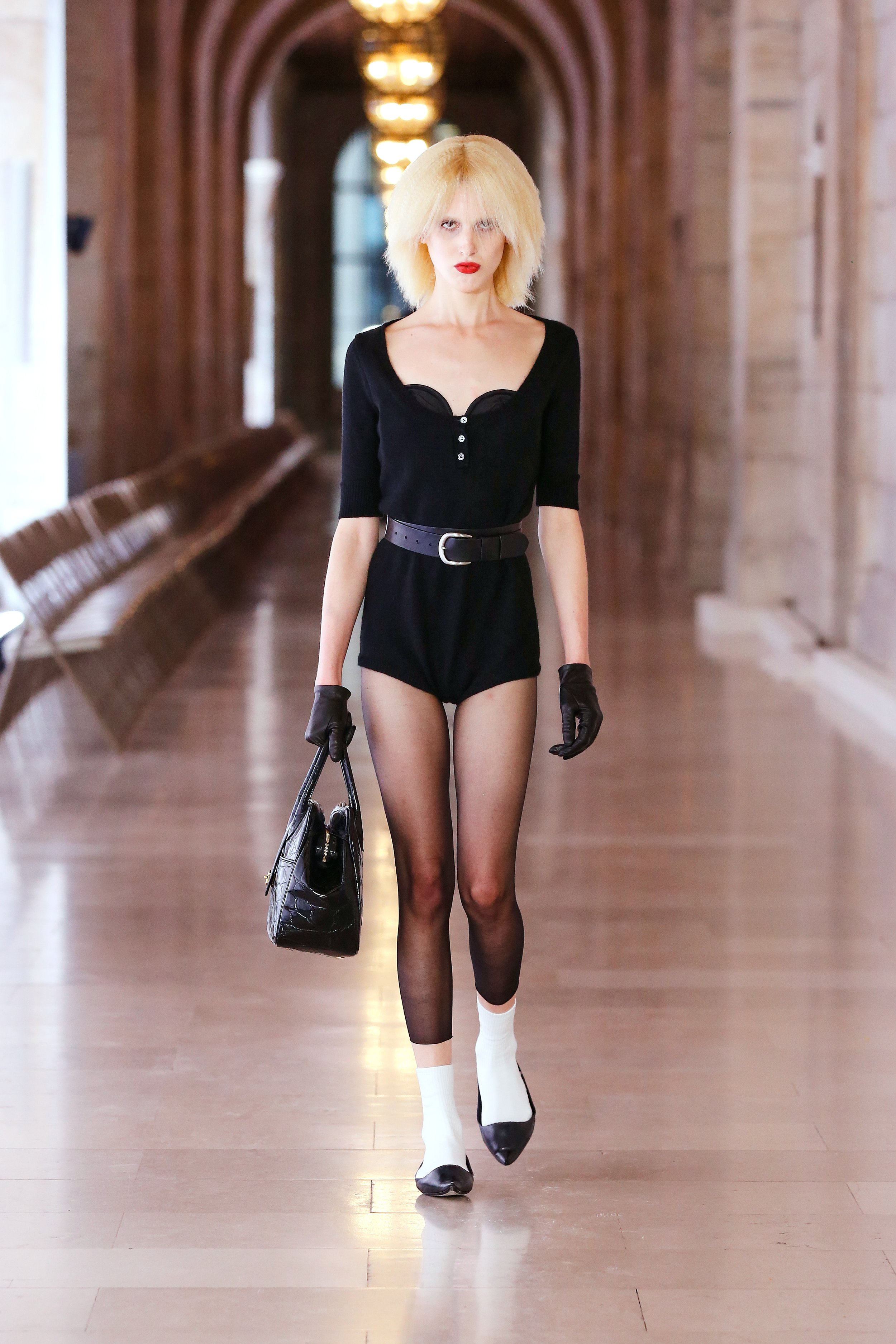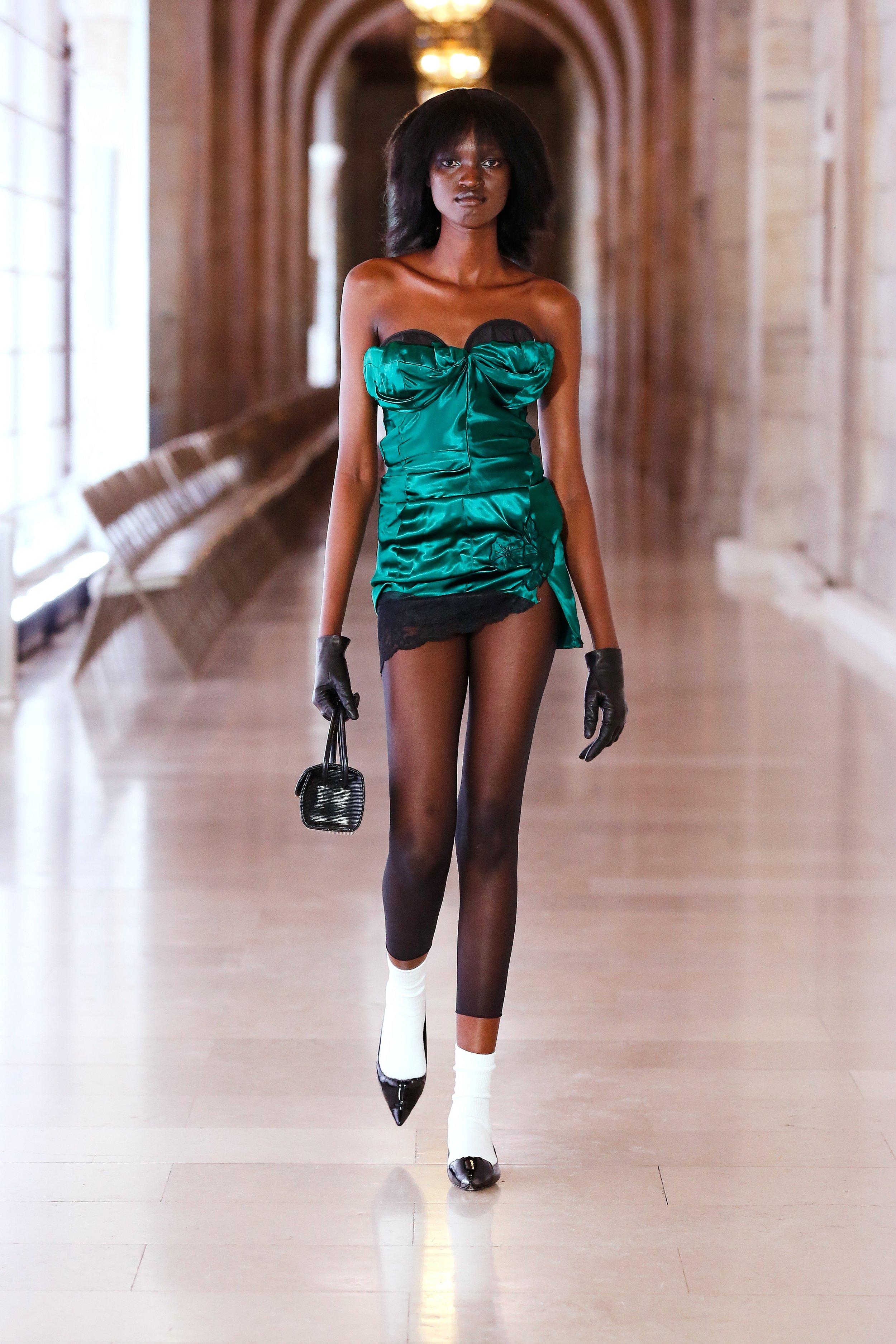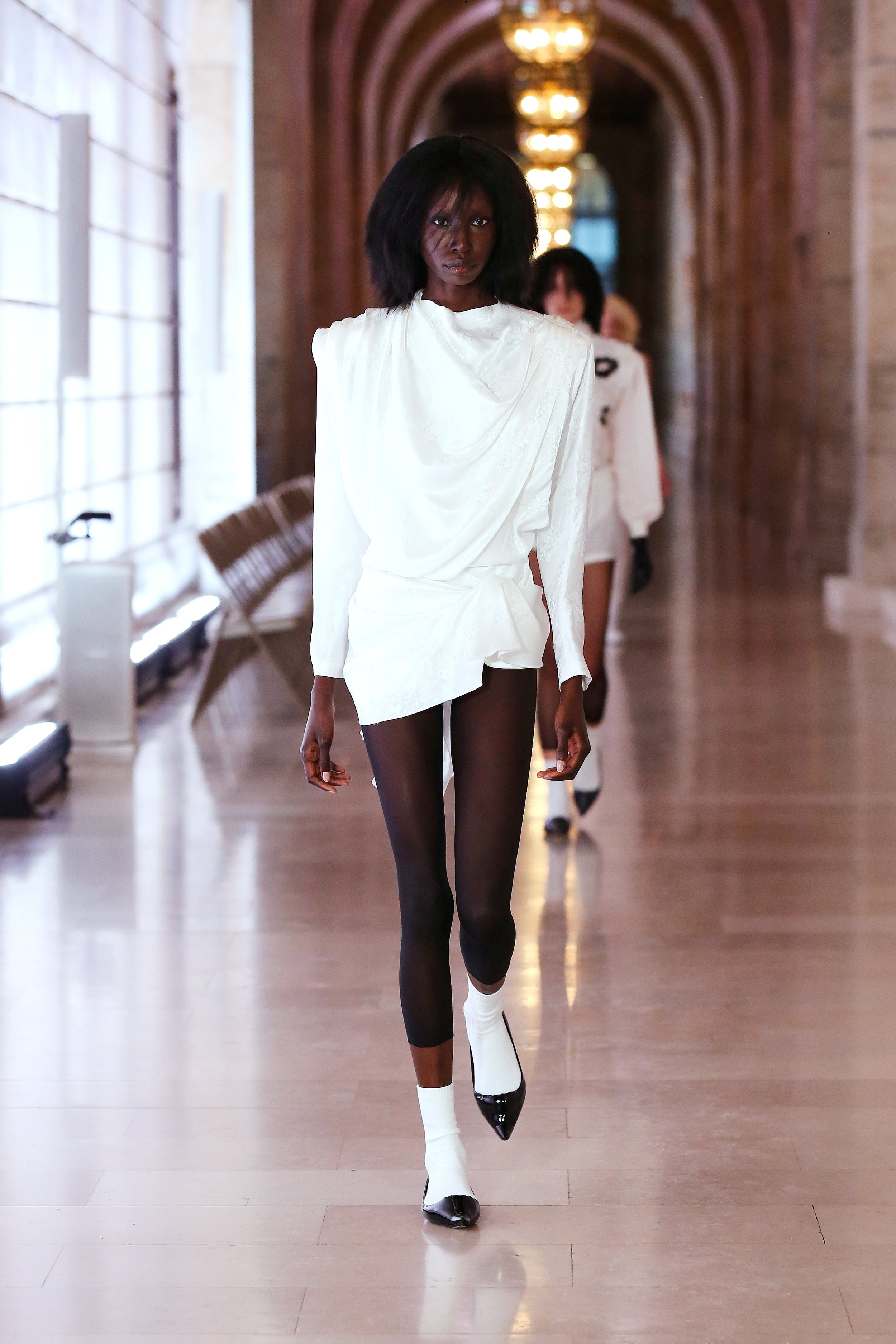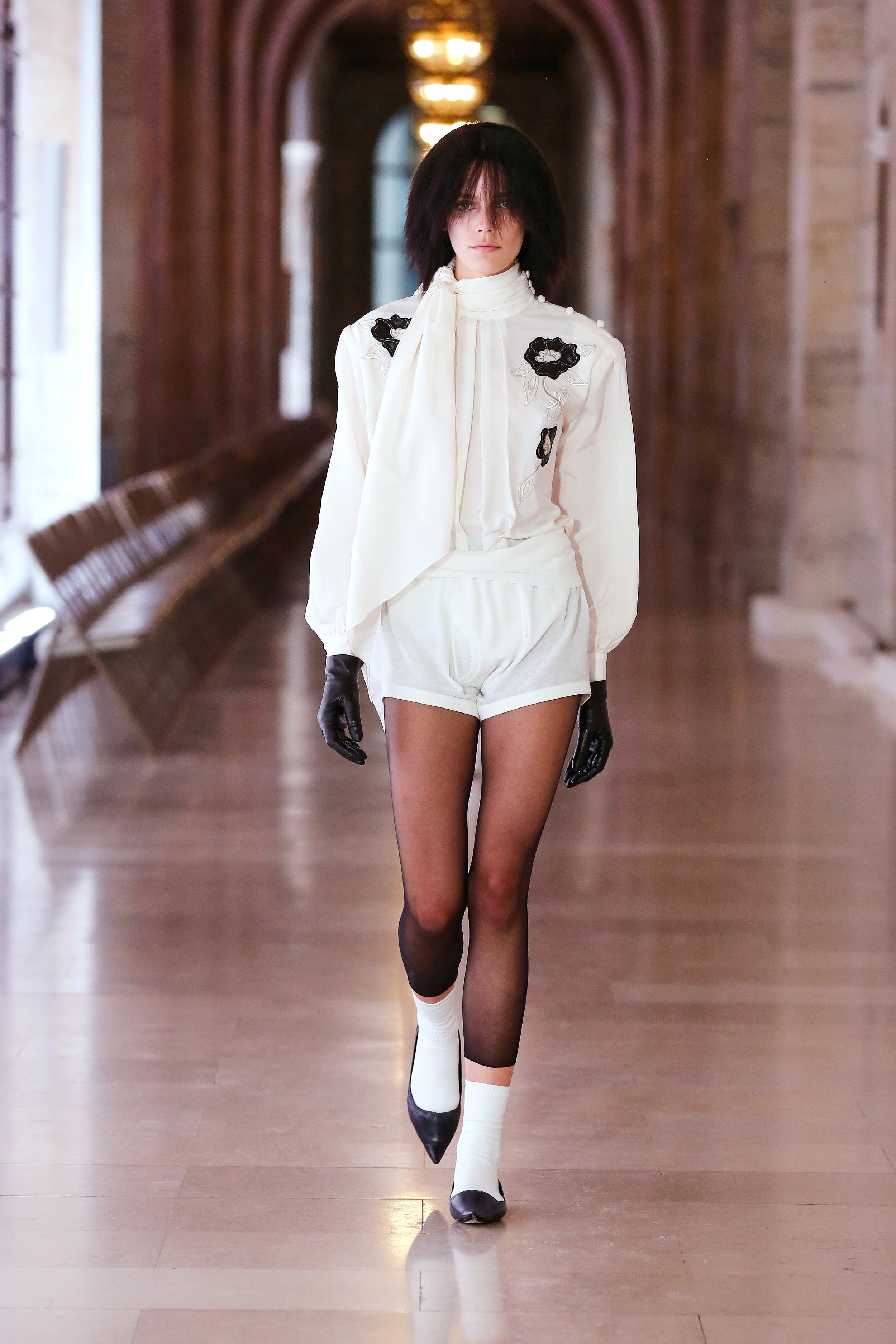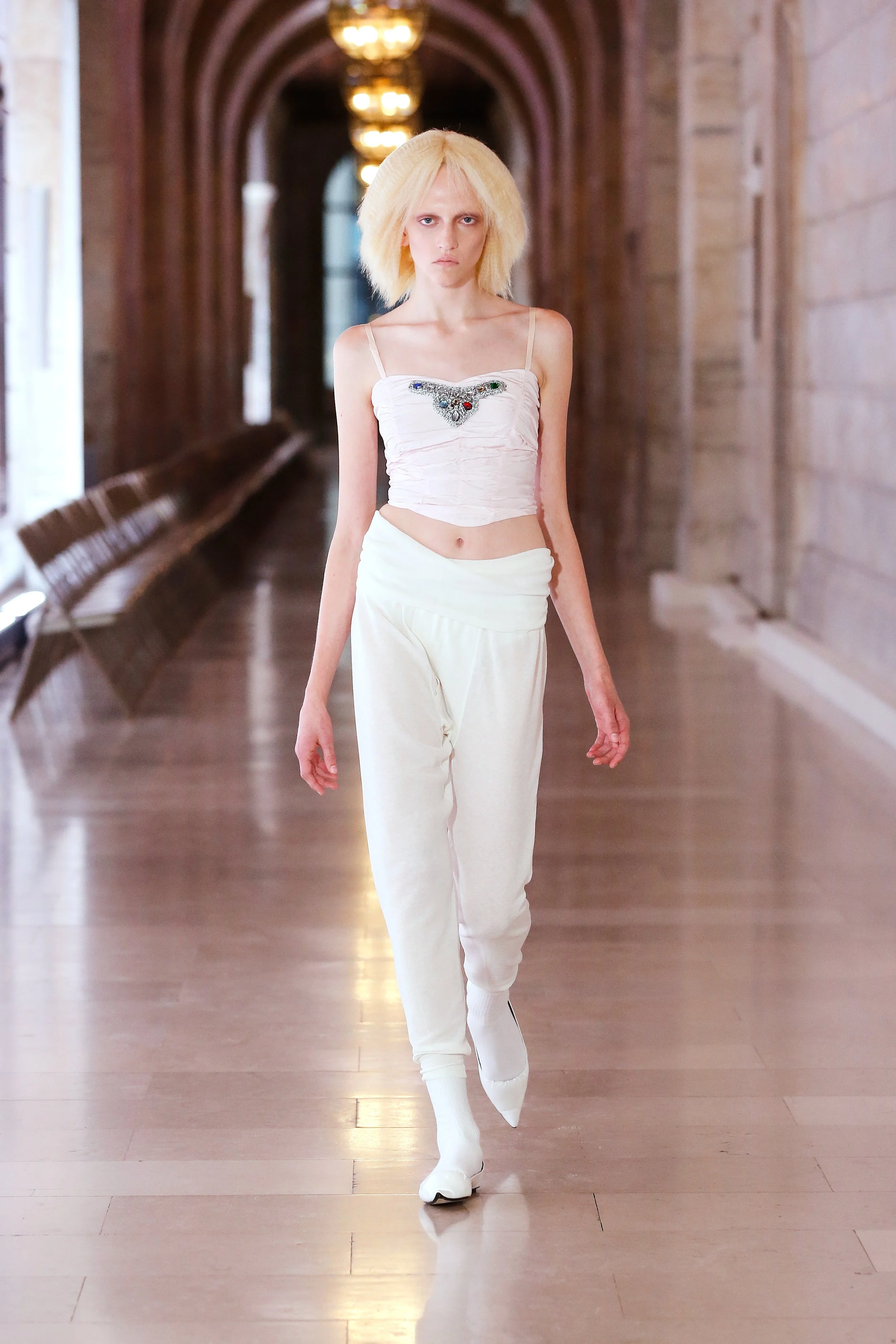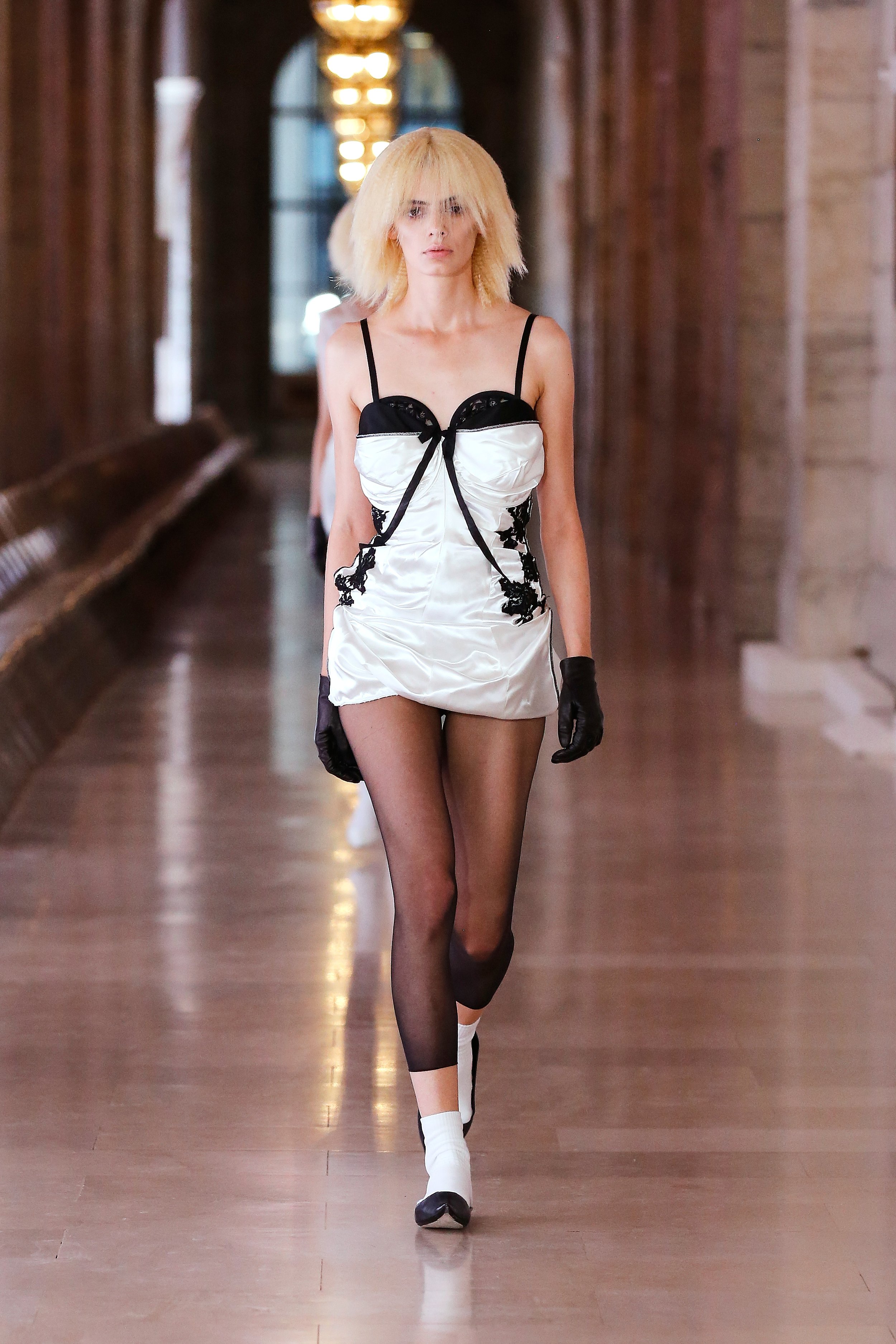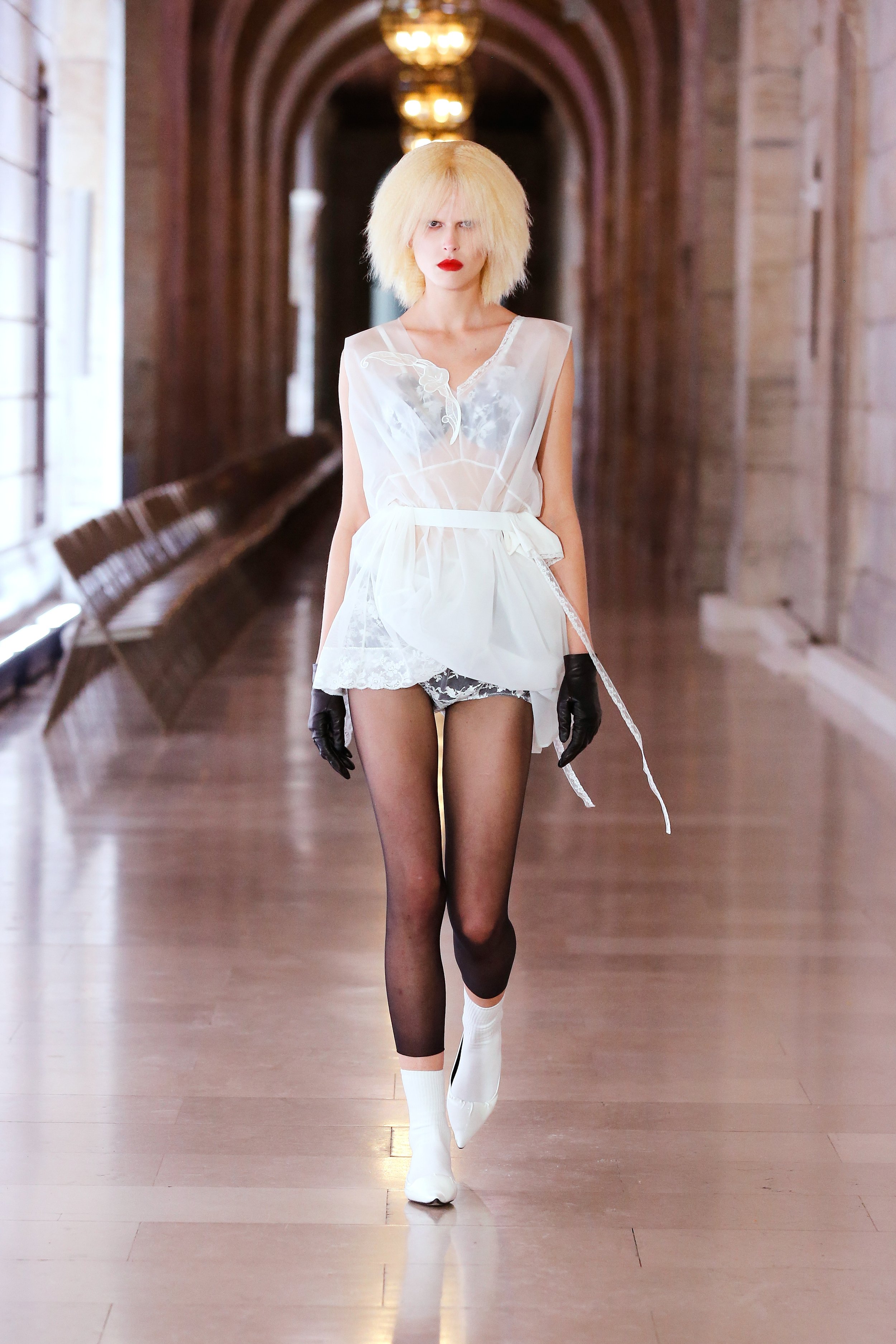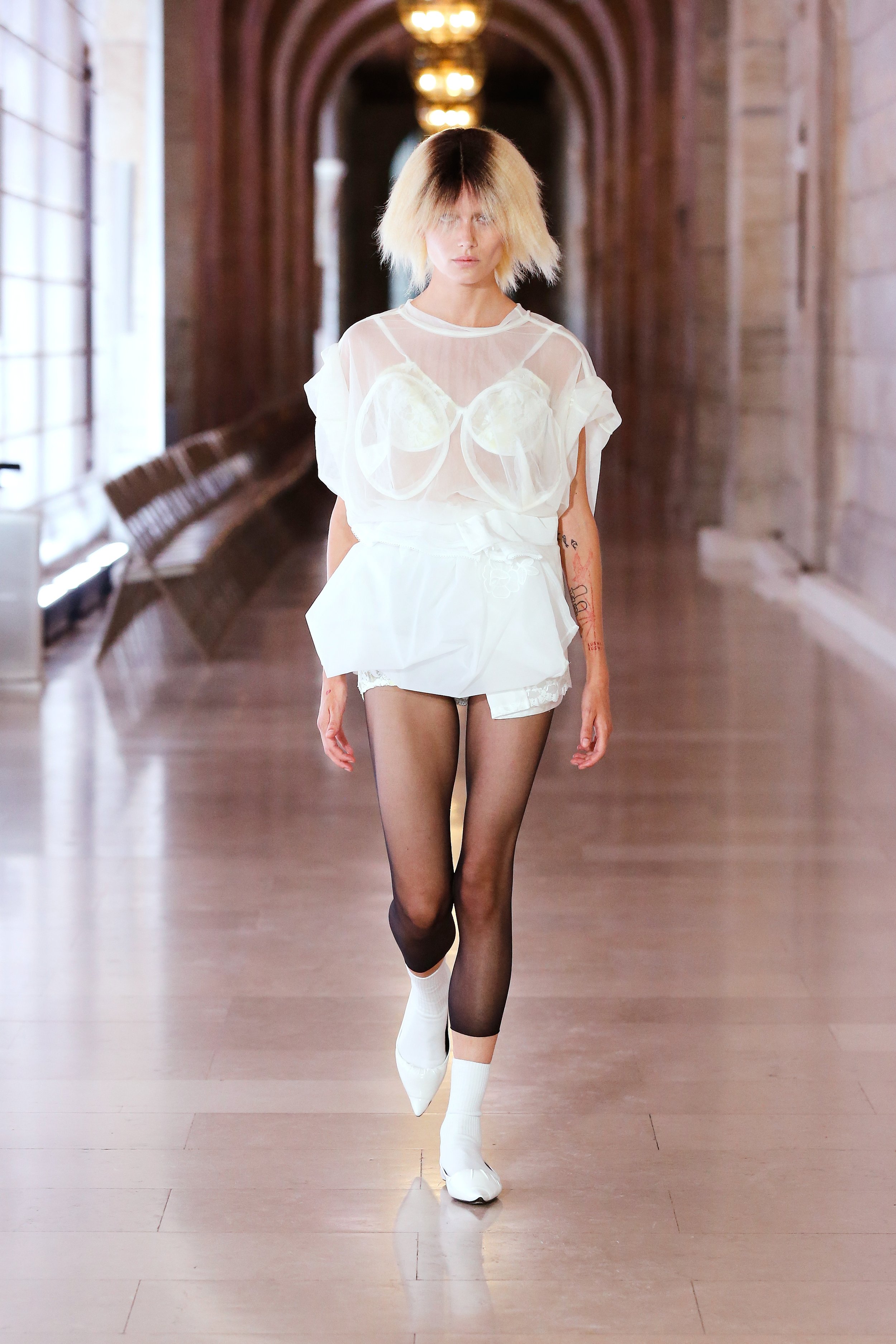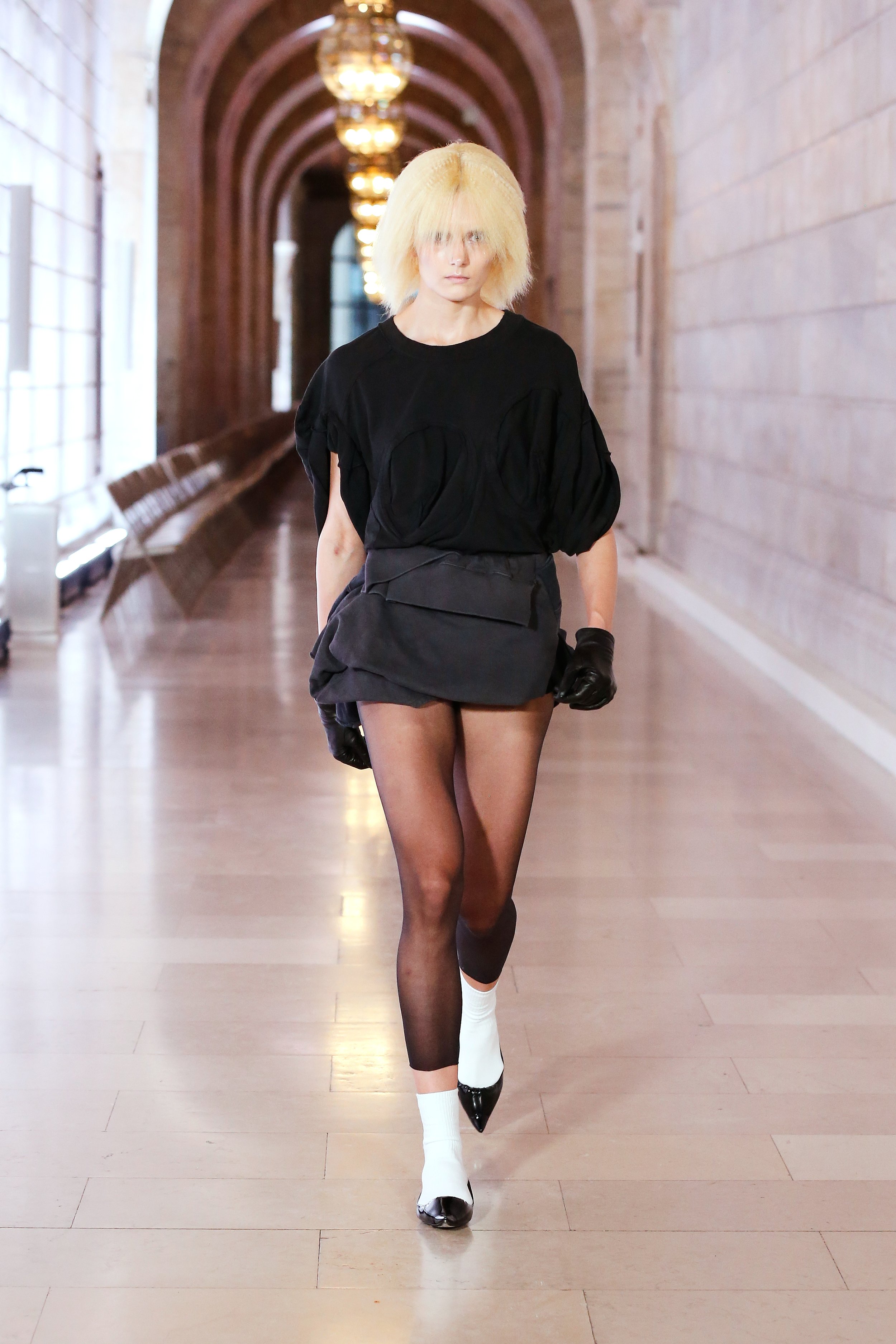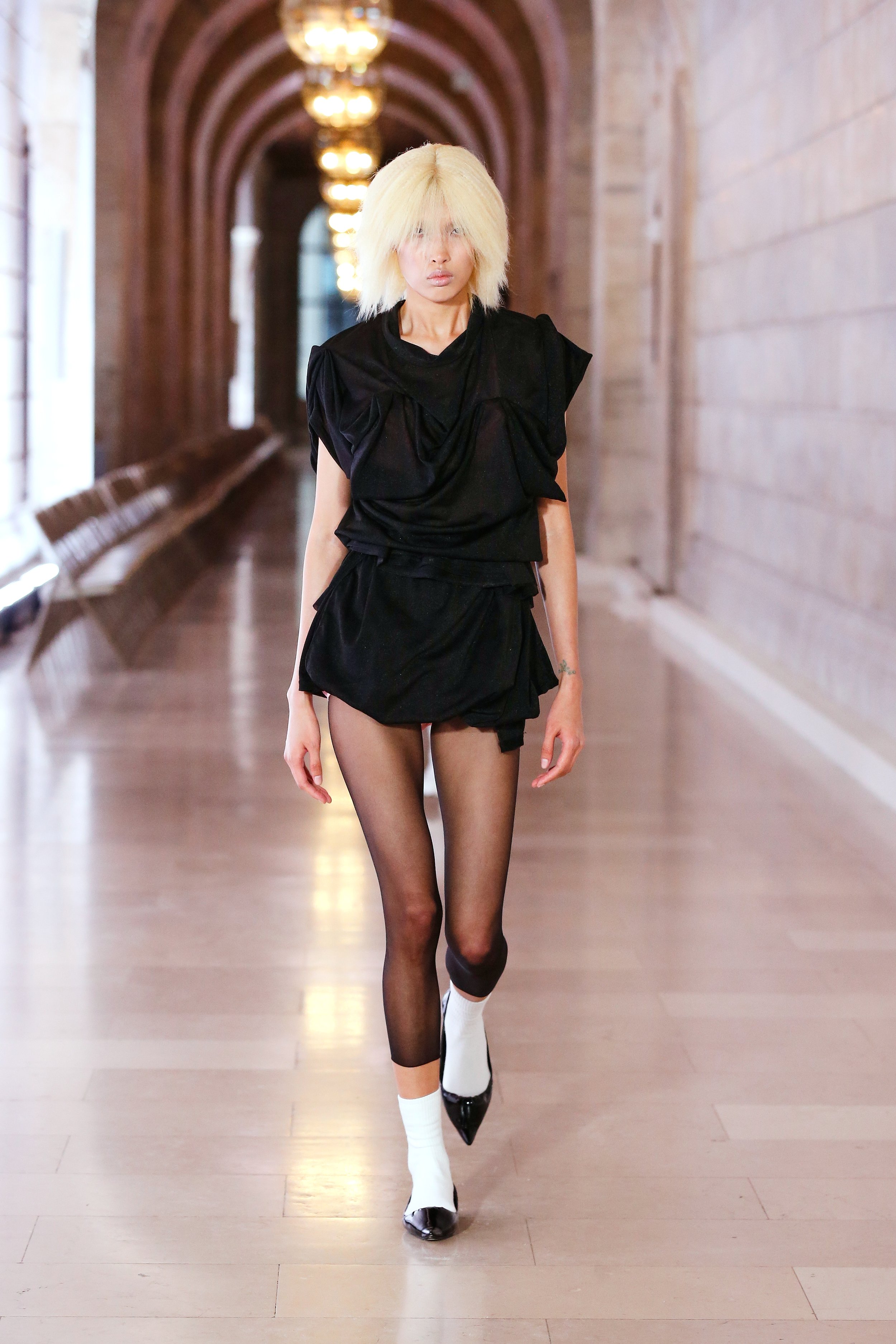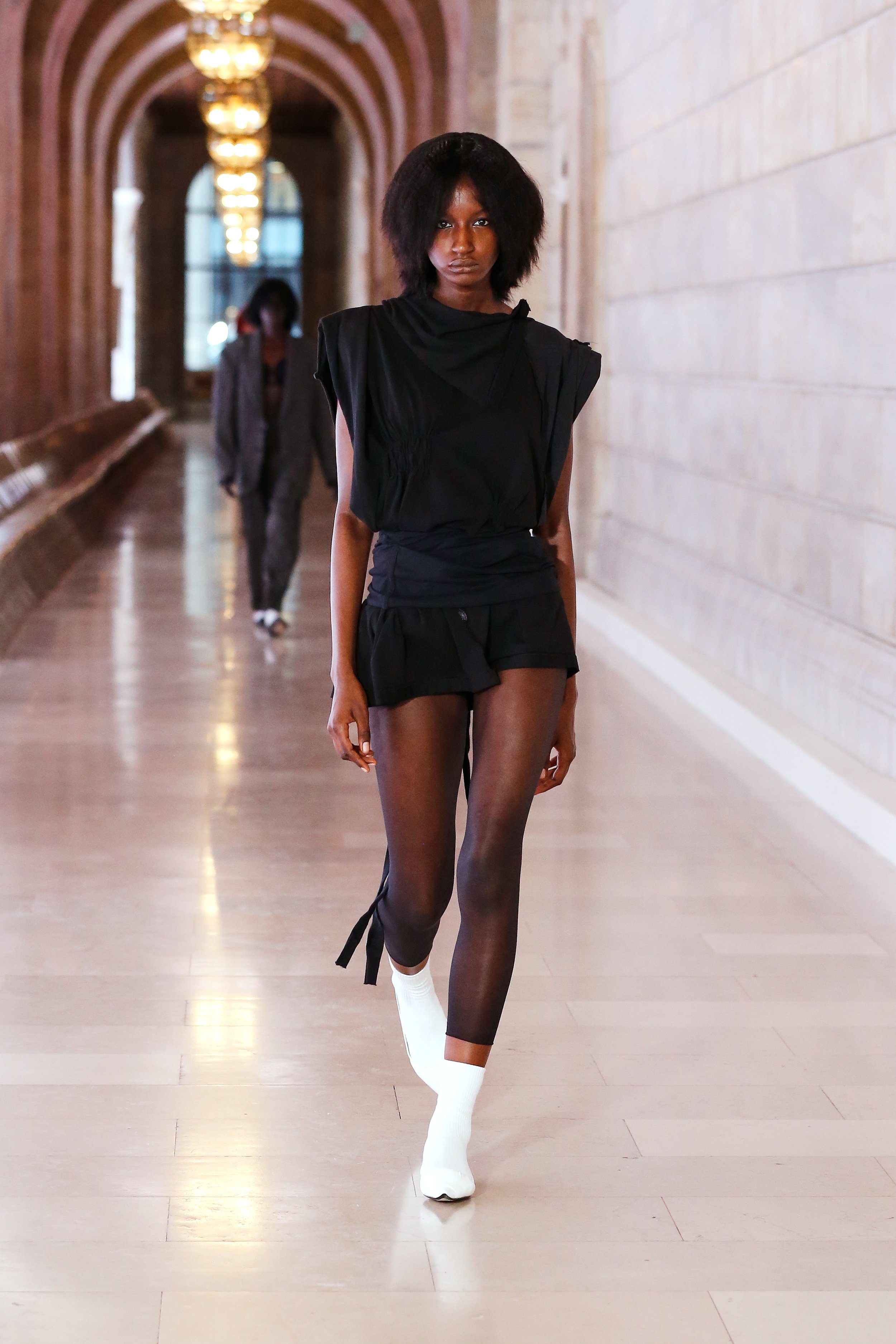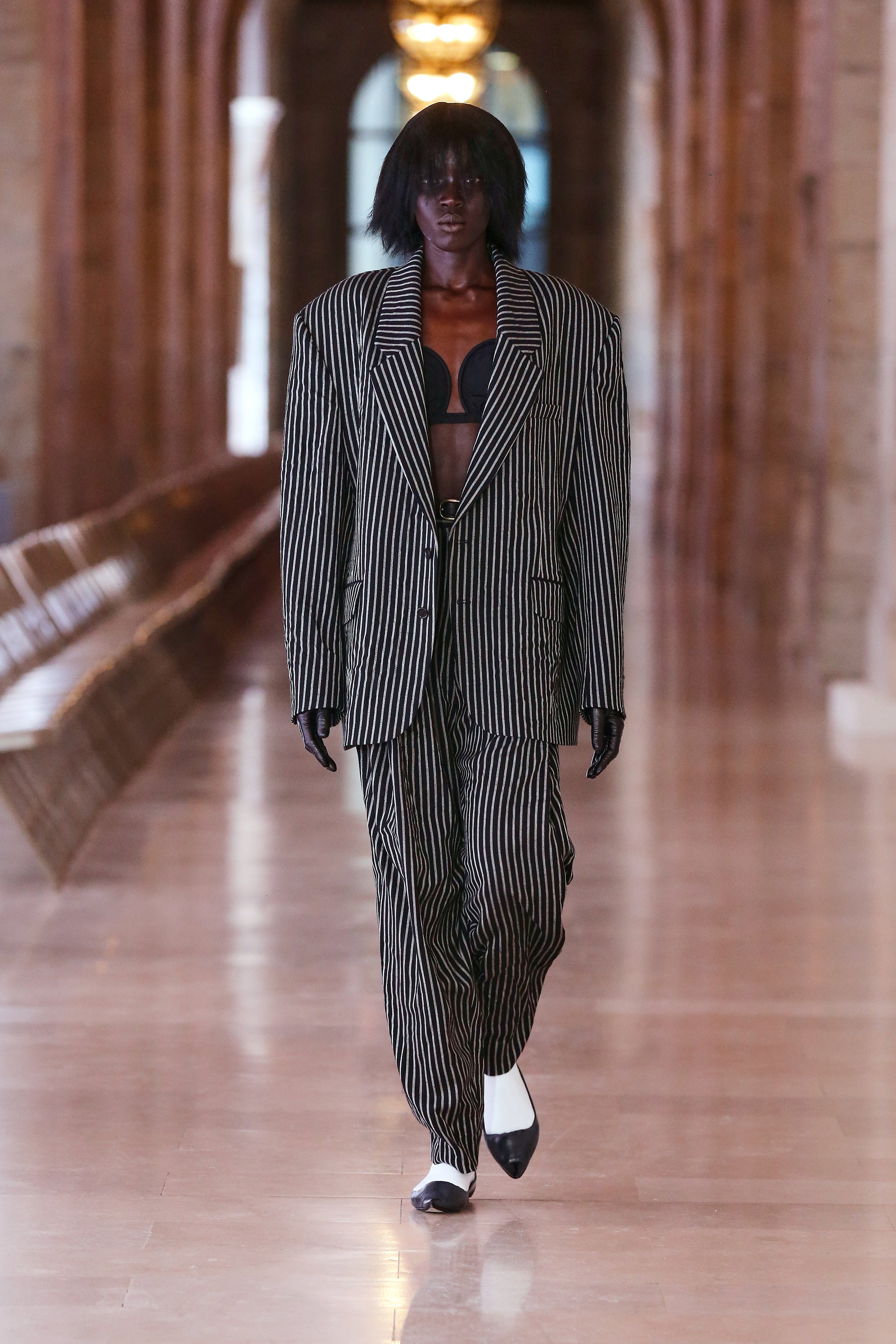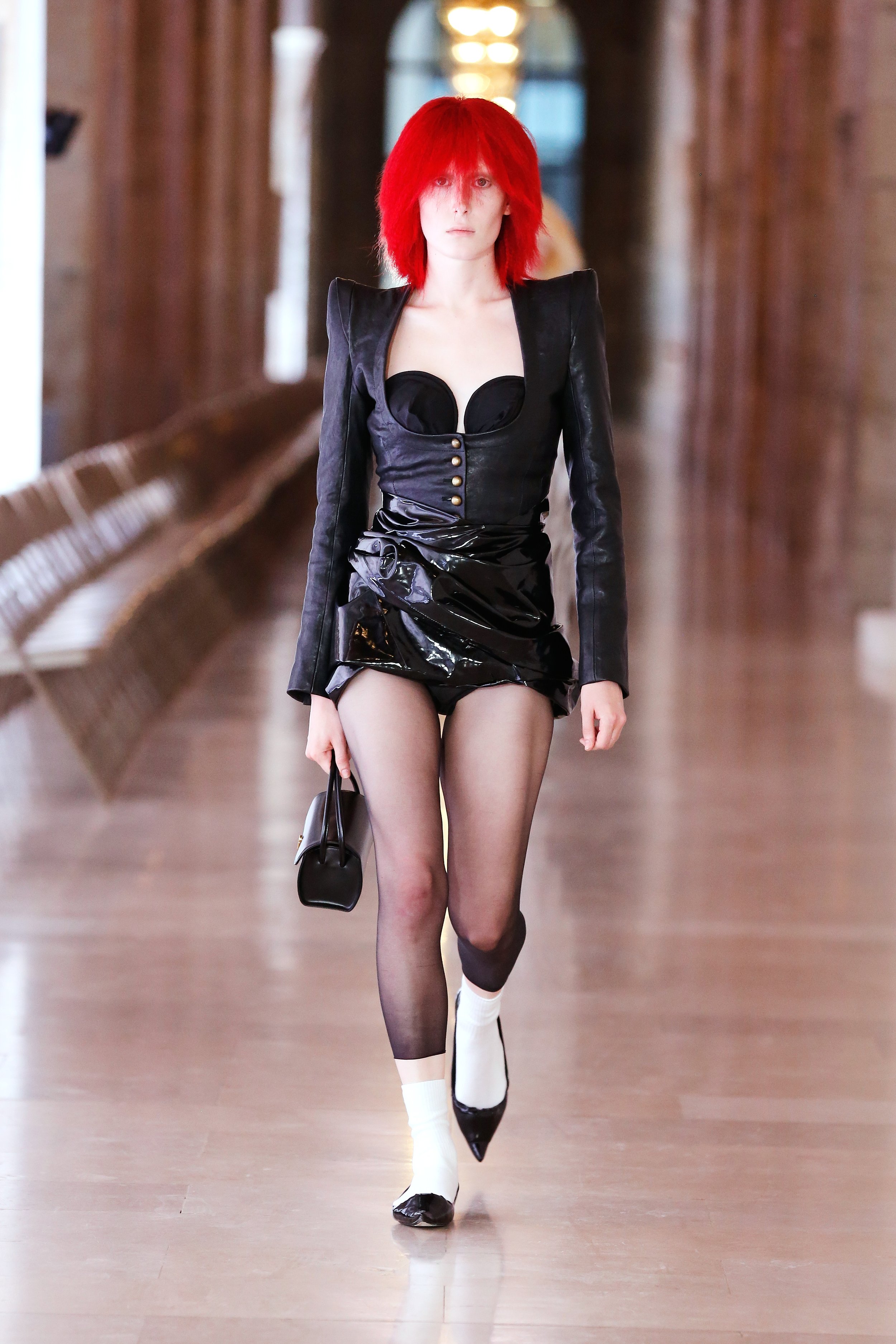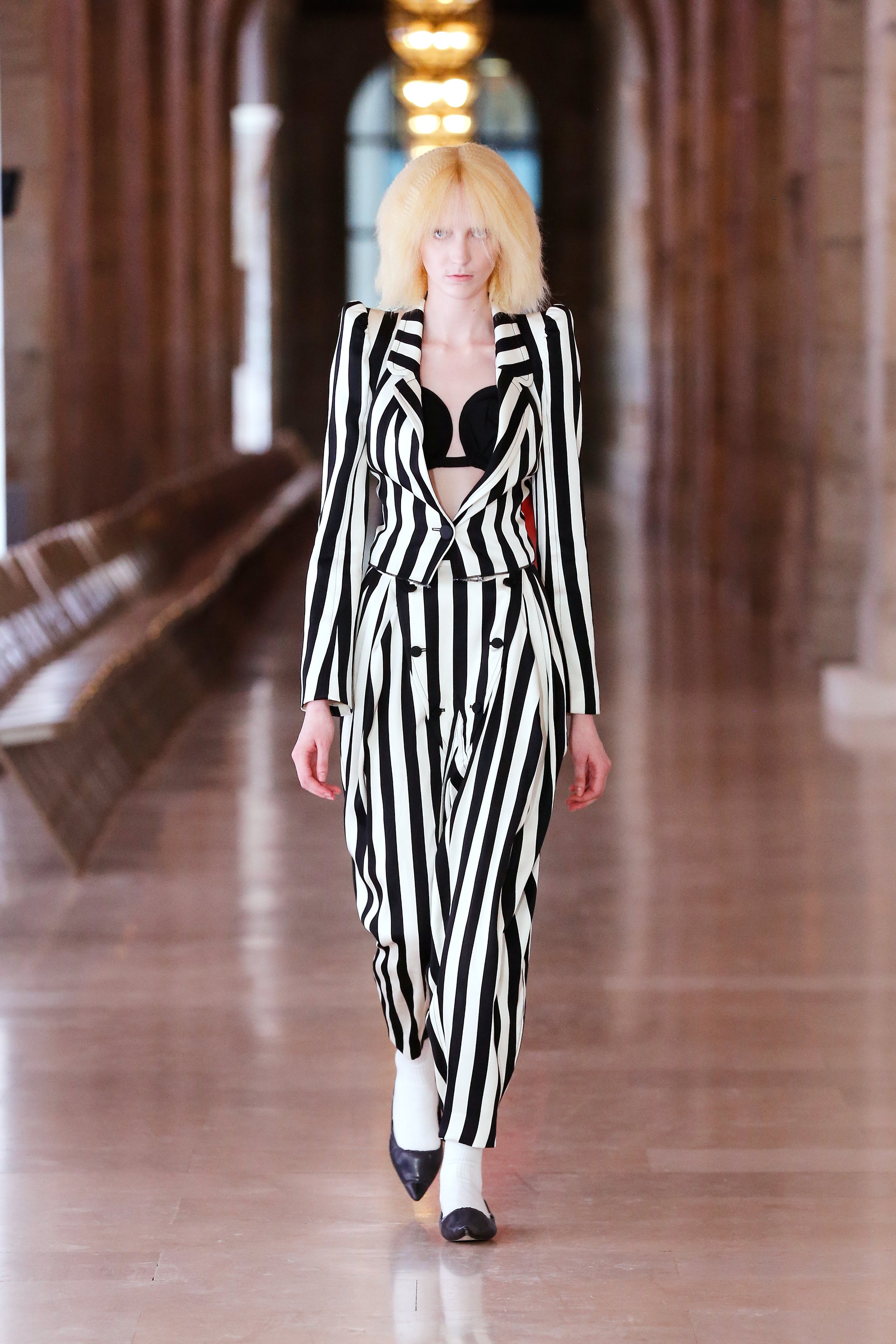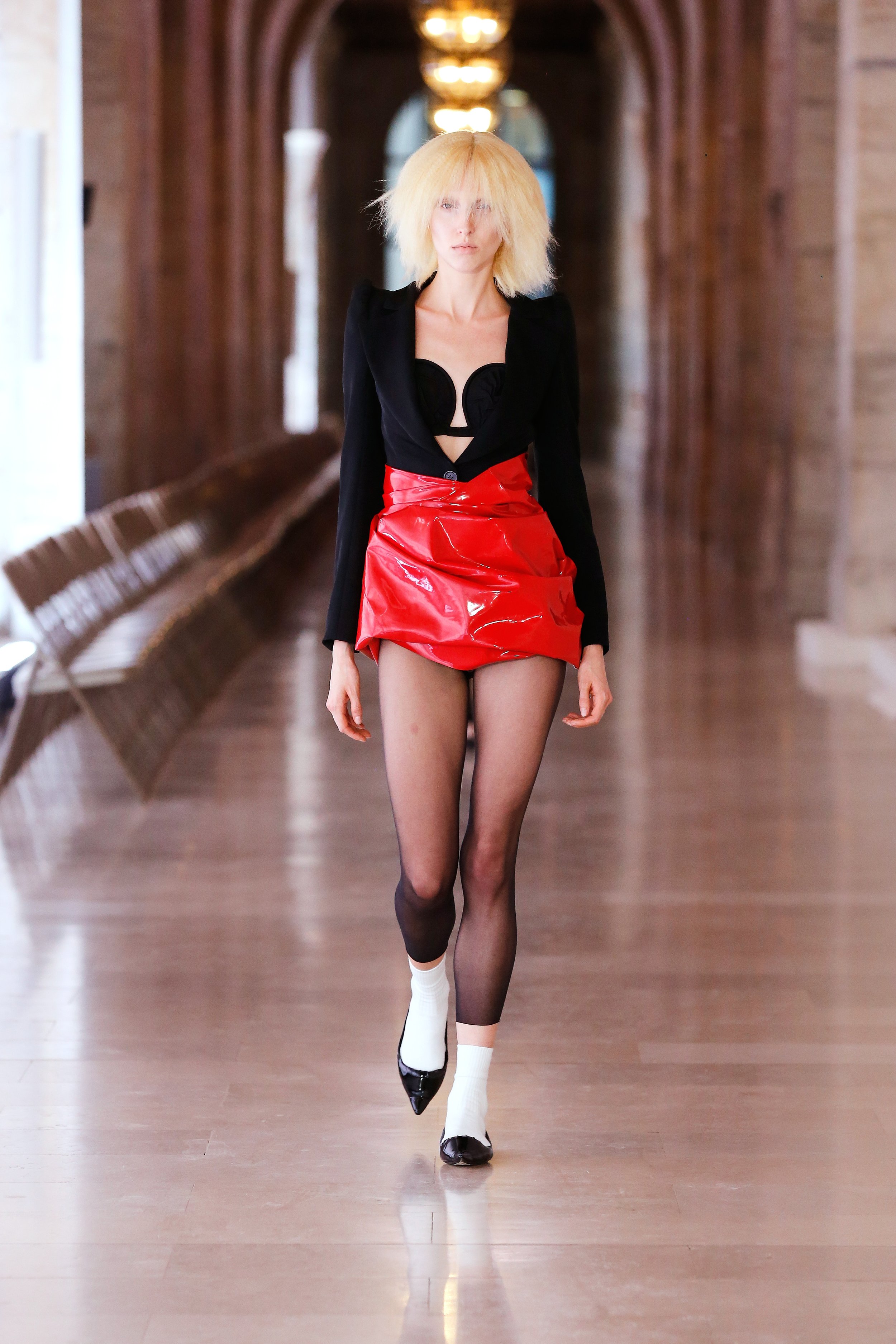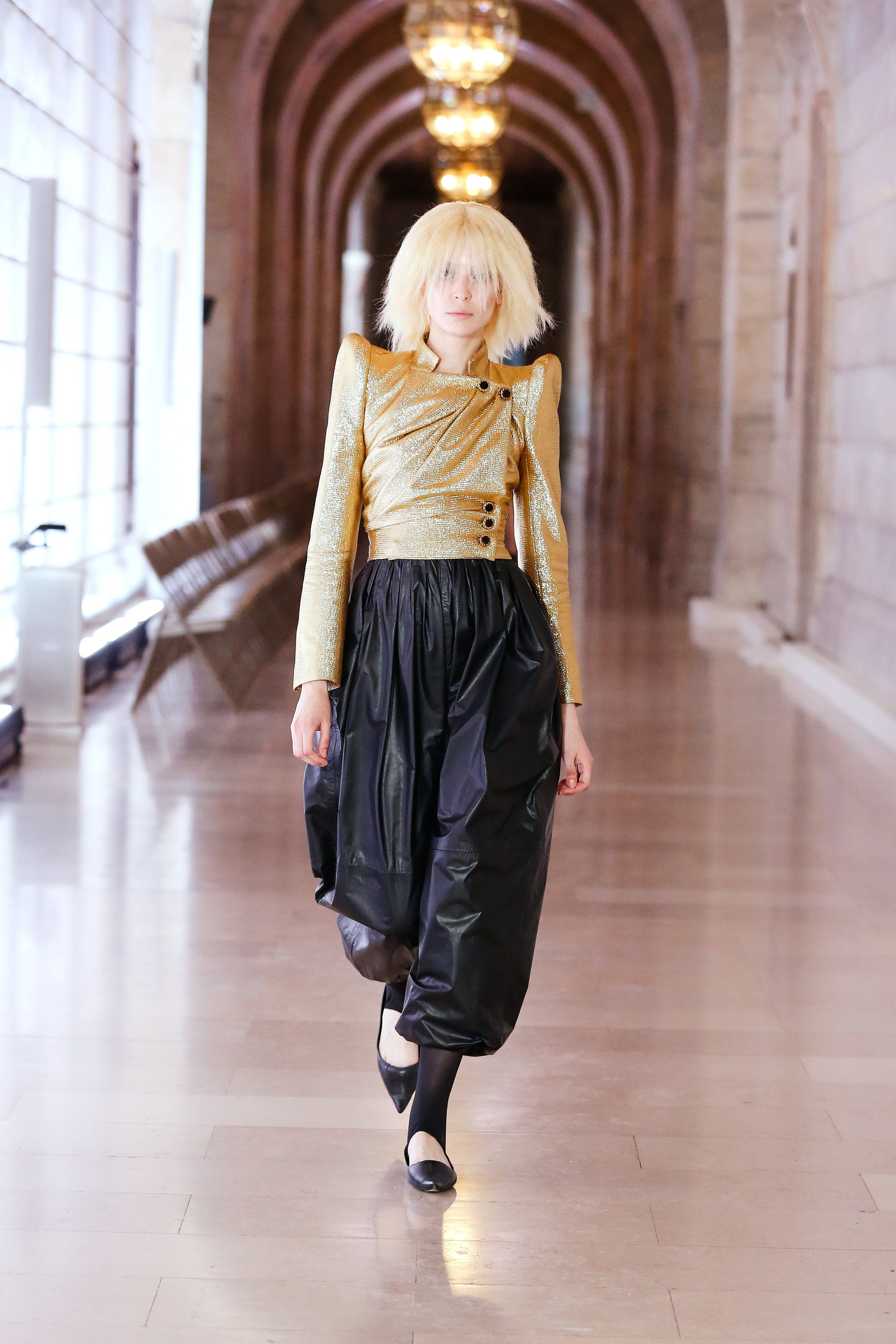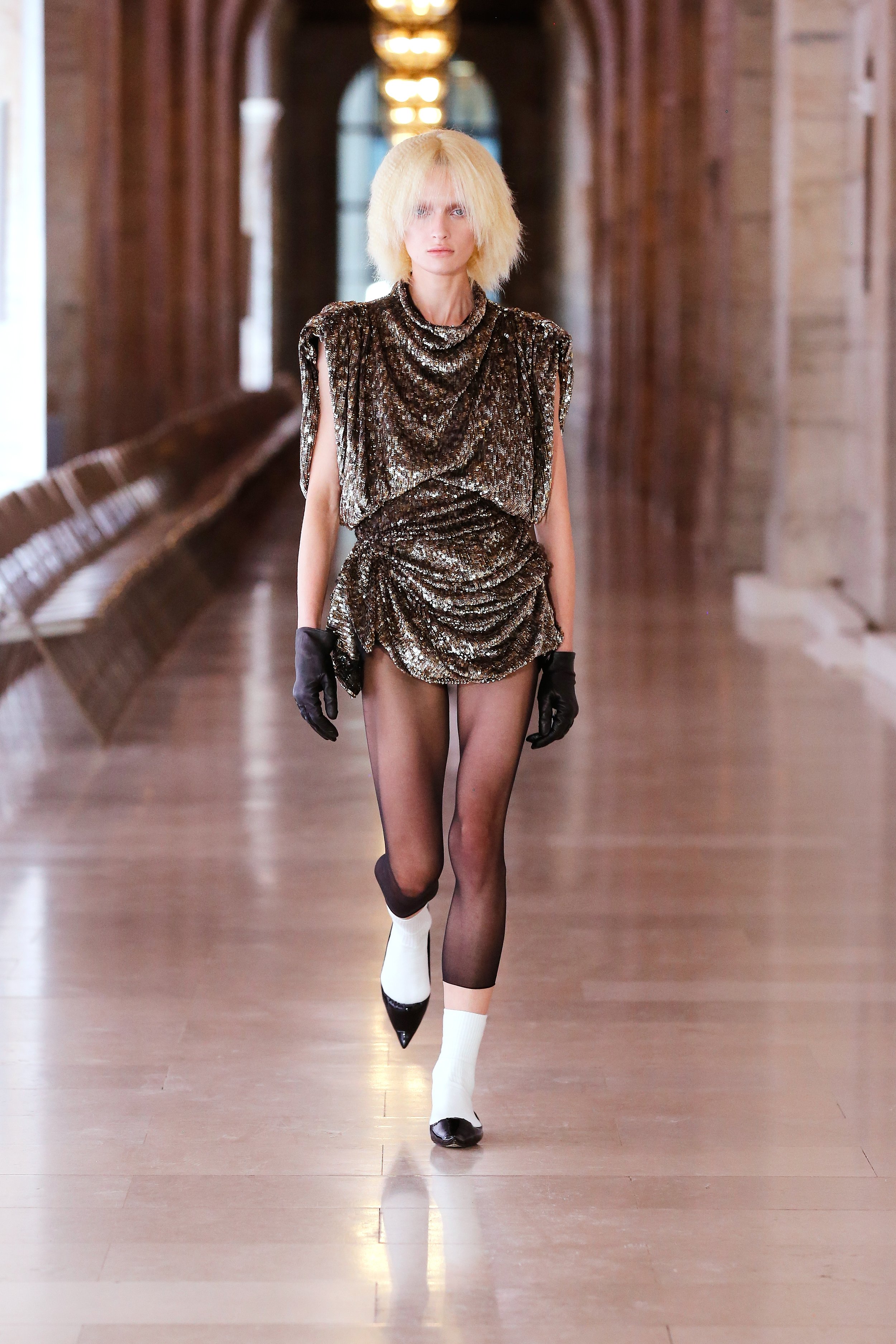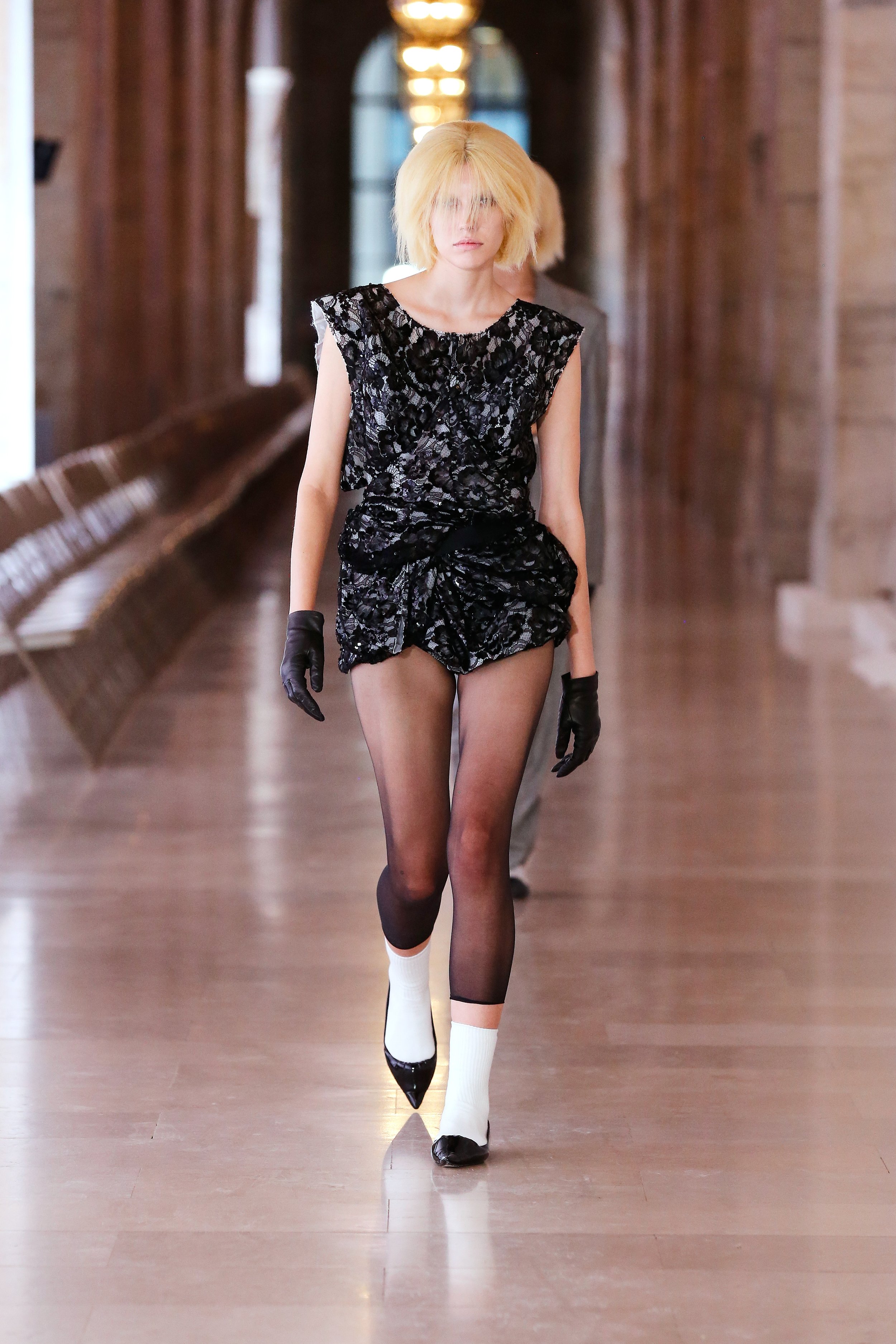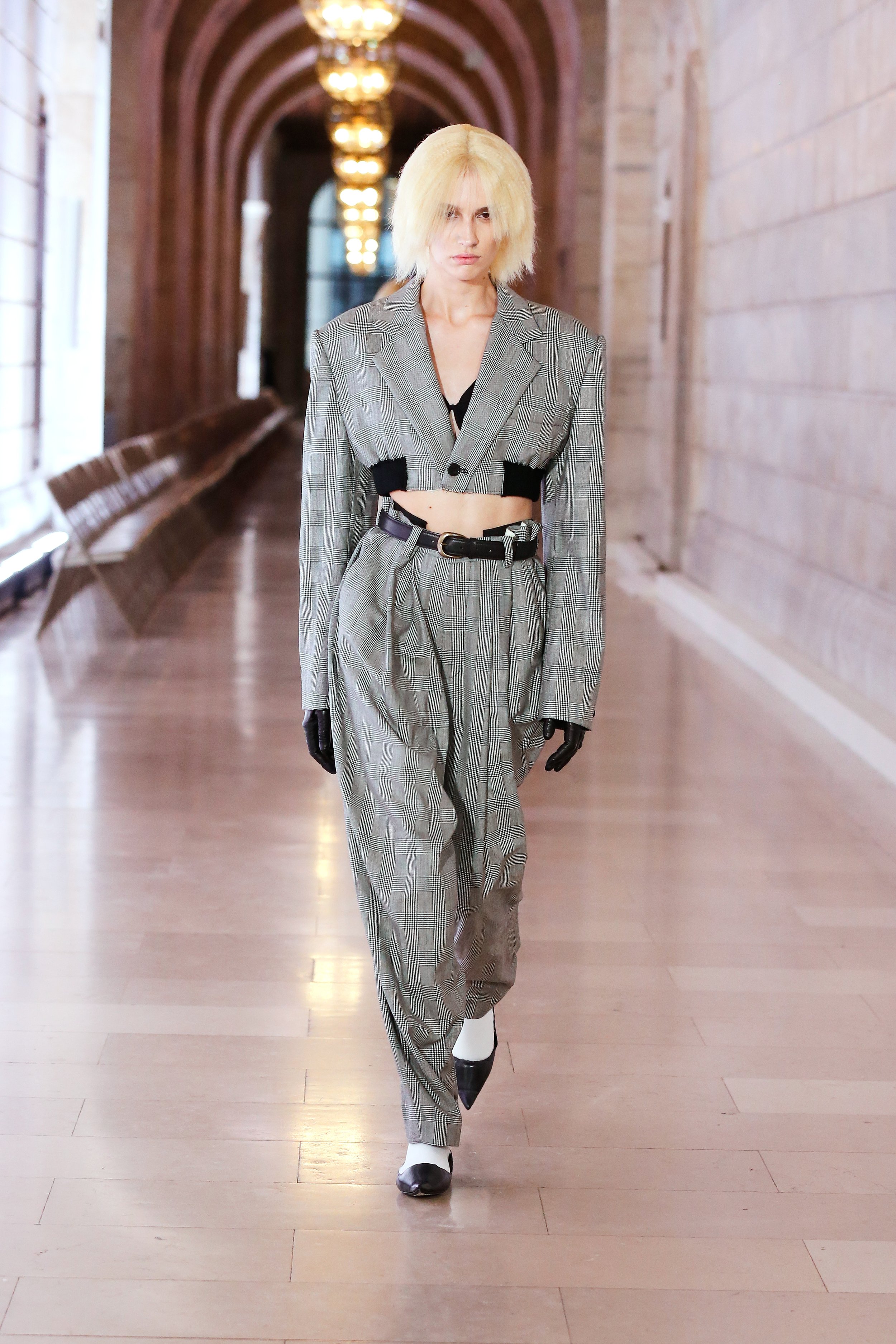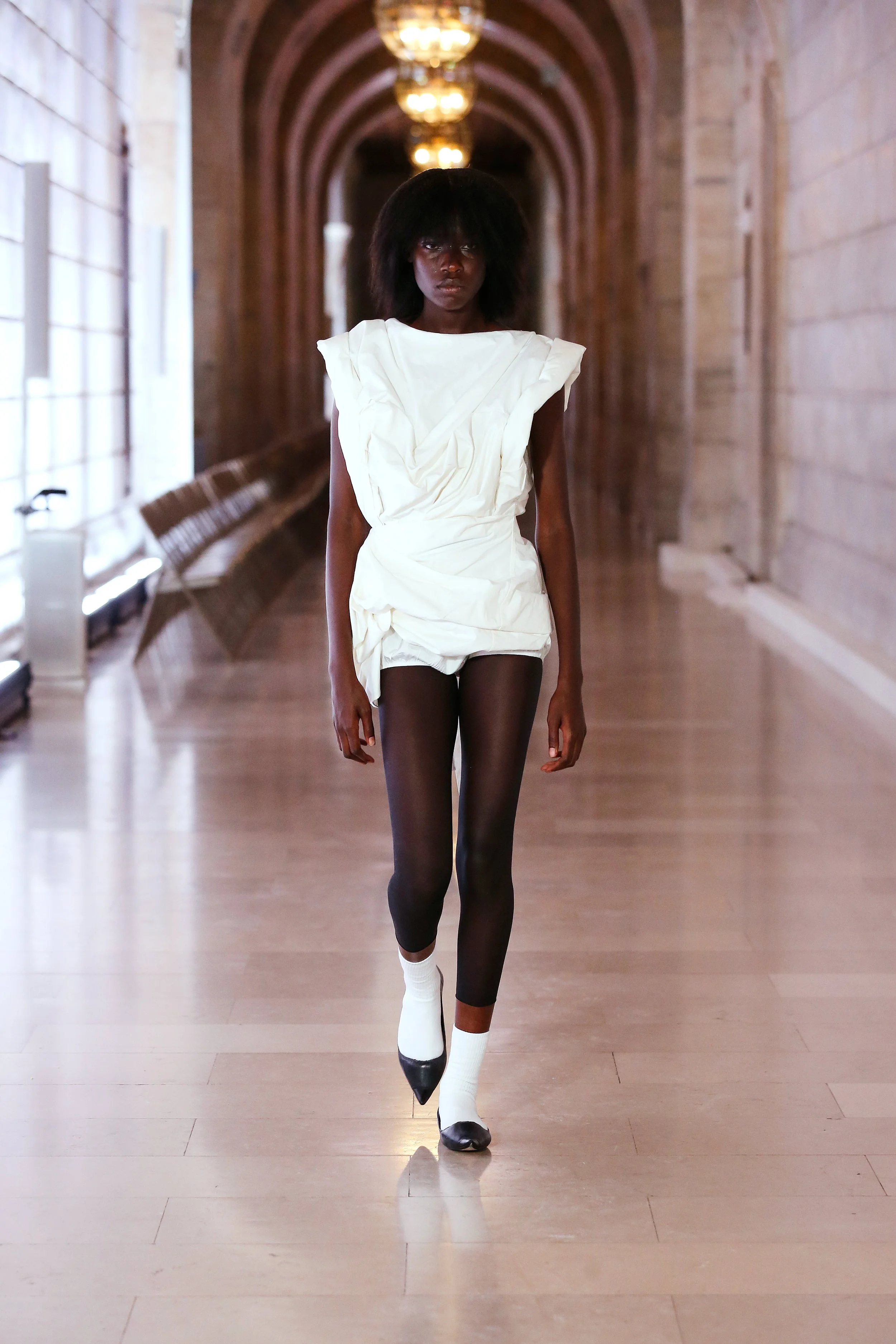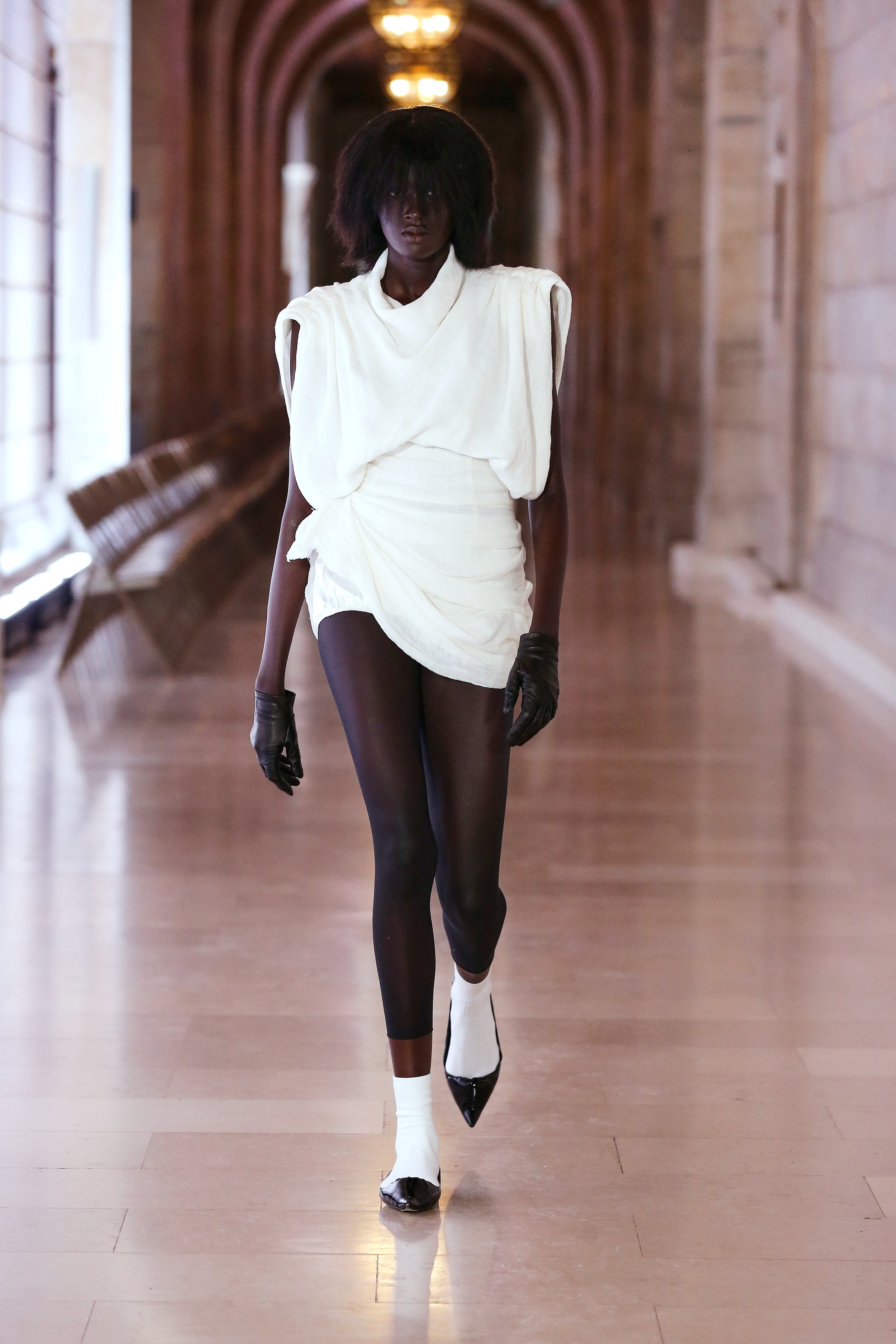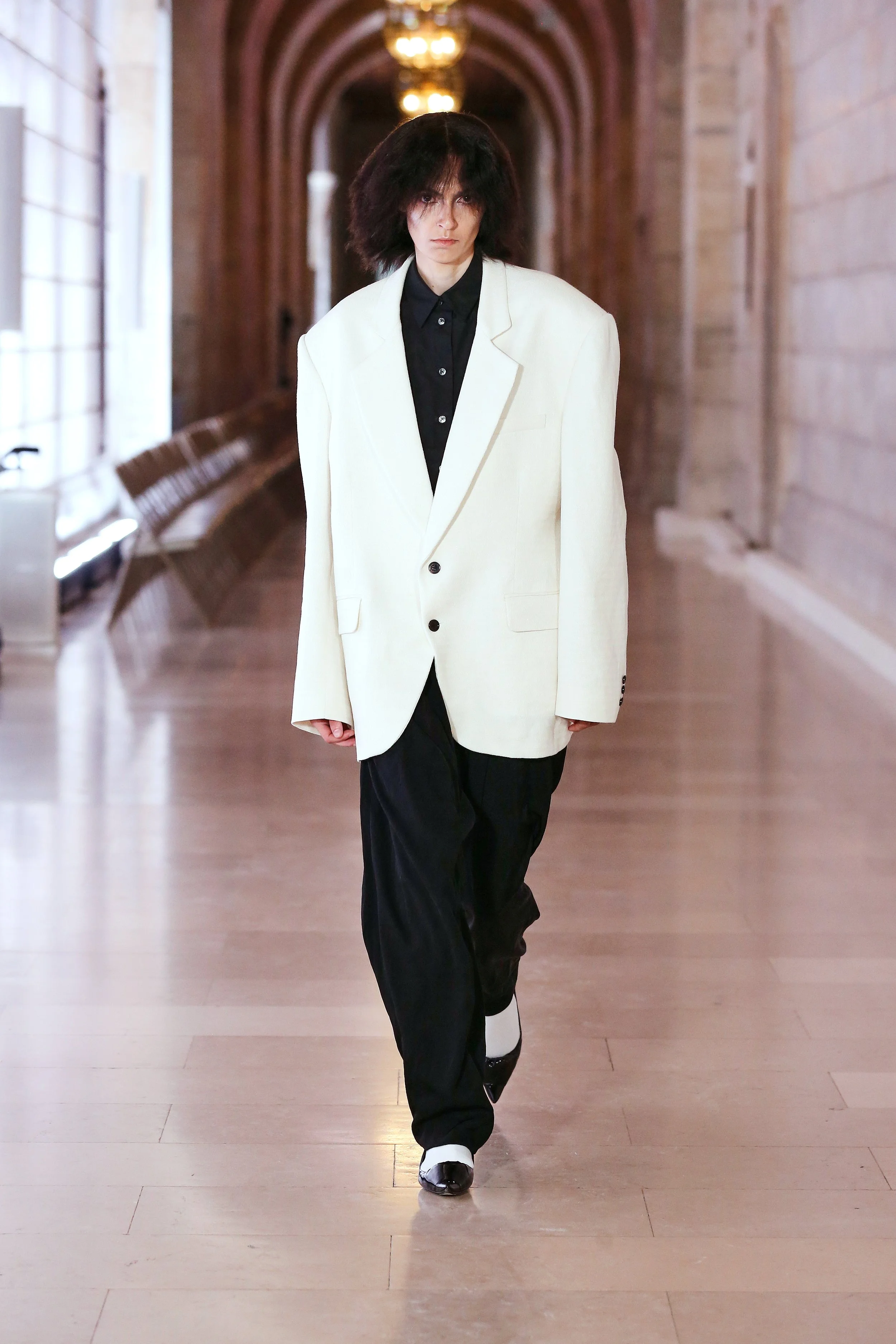Marc Jacobs’s 2-minute POV on dystopian wilderness at the New York Public Library for AW23.
Thirty years ago, for Spring 1993, Marc Jacobs shocked fashion with his now famous Grunge collection for Perry Ellis. It became instantly legendary, a major treatise on counterculture infiltrating the mainstream. The fashion cognoscenti were shocked, scandalized, even. (I’m smugly happy to say I loved it then.) Three decades hence, that collection has proven as powerful and prescient as Dior’s New Look 36 years before – and of greater long-term resonance, given the prevailing casualness of the modern wardrobe.
On Monday, Jacobs sent out another stunner. But whereas Grunge was about the clothes as well as the mood, this one cast clothes as secondary to speed, attention span and technology. It stunned in the manner of an electric shock: fast, startling and what-the-hell-just-happened?
As is Jacobs long-standing procedure, he started on time, here 7:30. By 7:32, it was over. Two minutes and done. Jacobs’ lineup of 29 models stomped down the long corridor of the stately New York Public Library, then reversed course and stomped back. Jacobs took a blink-and-you-miss-him bow, and that was that. The pace recalled the long-ago shows of Helmut Lang, who, at the height of his influence, sent out an army of women and men at a dizzying pace, making it difficult for his audience to savor individual looks. But he typically featured about 90 exits, allowing time for the fashion point to sink in – and the audience, to exhale.
Jacobs’ show was too concise and too fast for the clothes to register fully, apart from their mood of dystopian aggression; whether genuine or faux, the latter a foil for a retro punk-cum-club-kid aura, he let the viewer decide. Couldn’t take it all in? No matter! Jacobs’ show notes featured a before-the-fact review, written by Chat GPT (journalists, it’s coming for our jobs): “The Marc Jacobs fashion show captured audiences with its innovative approach to blending menswear-inspired tailoring with feminine aesthetics.” AI nailed the contrast, but not the Eighties vibe, apparent even as the models’ sped by: strong-shouldered power tailoring played against flirty-with-attitude micro-mini party frocks with bra-centric bodices, all in a clarifying palette of black and white.
With his models’ two-minute trek and the non-human show summary, Jacobs may have been expressing dismay at fashion’s current status quo – or maybe just resignation. He is one of fashion’s great creators. He loves and believes in the power of major fashion statements and individual beautiful clothes to enchant, to inspire, to elicit deep emotion. But that takes time and consideration from the viewer. Today, however, far more time is spent considering what goes on around the runway than on it. The most recent and head-spinning example: Pharrell Williams’ debut at Louis Vuitton. What resonated was Pharrell’s star power, along with the extravaganza, the Pont Neuf, the tourist boats, the celebrity multitudes in attendance. But apart from some pixelated camo, the clothes – not so much.
For Jacobs, the clothes have always been of primary importance. As his show notes (the part not written by Chat GPT) indicate, it took the same village to create this collection as those from the days when clothes were the main attraction. He credits about 90 names – some companies, (e.g. KCD and his factories) but most individuals, including his design and production teams, led by Joseph Carter and Danuta Denuree, respectively. Experiencing the depth of joy that their communal work – the fashion – can deliver requires first paying attention. Now, with the runway garnering less attention than the surrounding swirl, why not just truncate the typical 12-minutes or so of showtime down to two?
Speaking of not paying full attention, outside the library, a ragtag group of anti-fur protesters gathered with megaphones and handwritten signs that second-graders could have executed more artfully. Though they assembled too late to fully make an impact on the incoming crowd, they got us on the way out. Their issue seemed to have been Jacobs’ work for Fendi, which in September featured a couple of upcycled fur accessories, because he hasn’t done fur at Marc Jacobs in years. Why let accuracy get in the way of a rant?
On my way home, I stopped at the corner grocery store to get skim milk for tea. (Yes, I do dairy.) An enthusiastic group of boys, about 10-years-old or so, was selecting cookies. “I’ll take these, because I’m gluten free!” one proclaimed, with a degree of pride. “I’m gluten-free, too!” another echoed. “Well, I’m not all gluten-free. I’m sort-of gluten-free.”
Oh, for simpler times. When protesters got their facts straight, a kid just enjoyed a cookie, a fashion audience reveled in the beauty of a dress, and AI didn’t tell us a damn thing.
